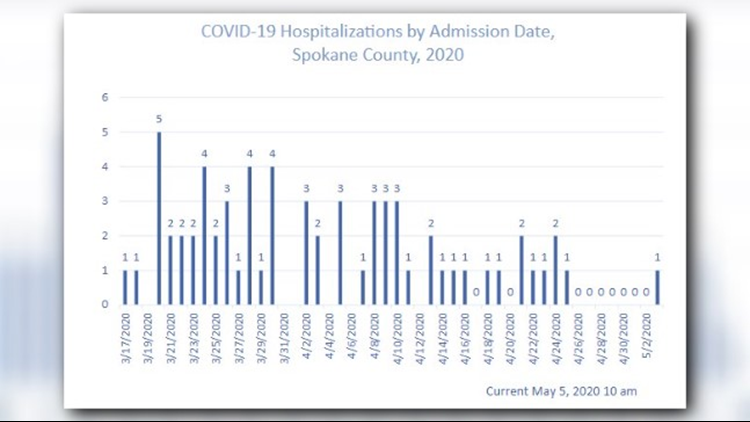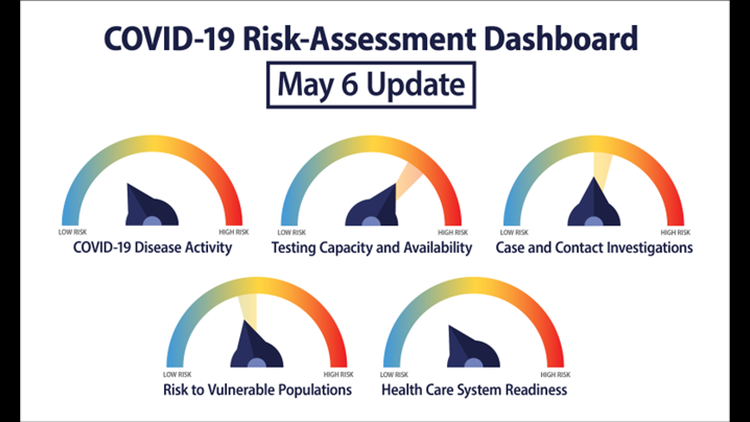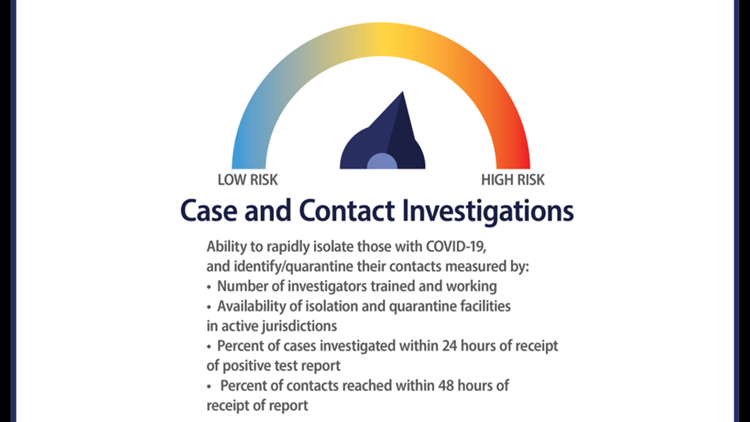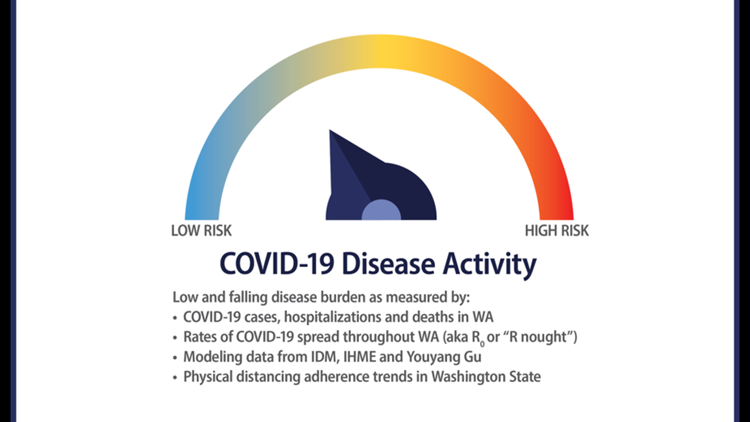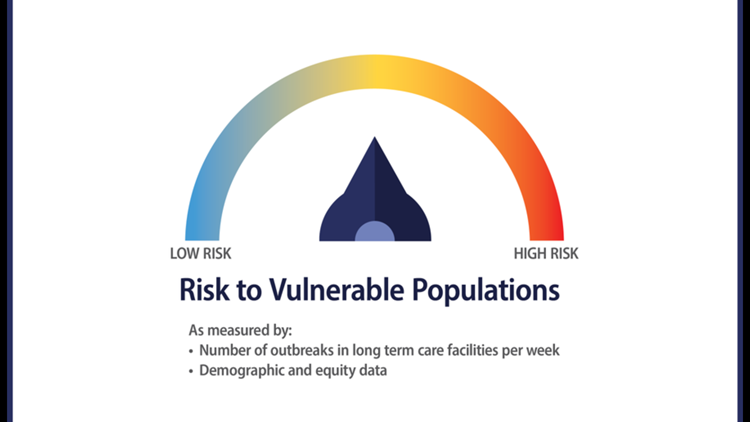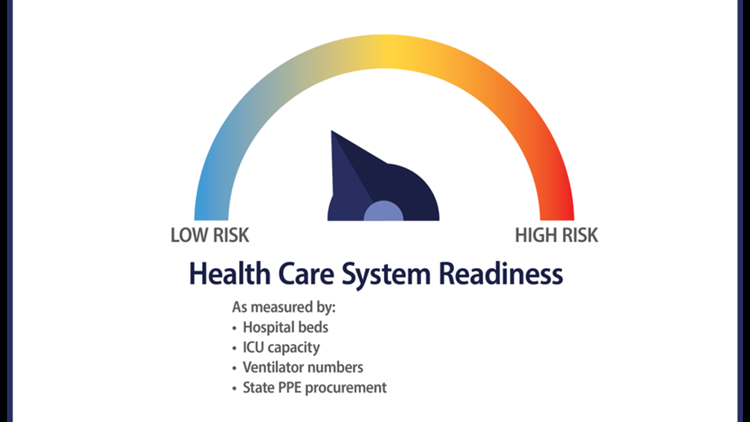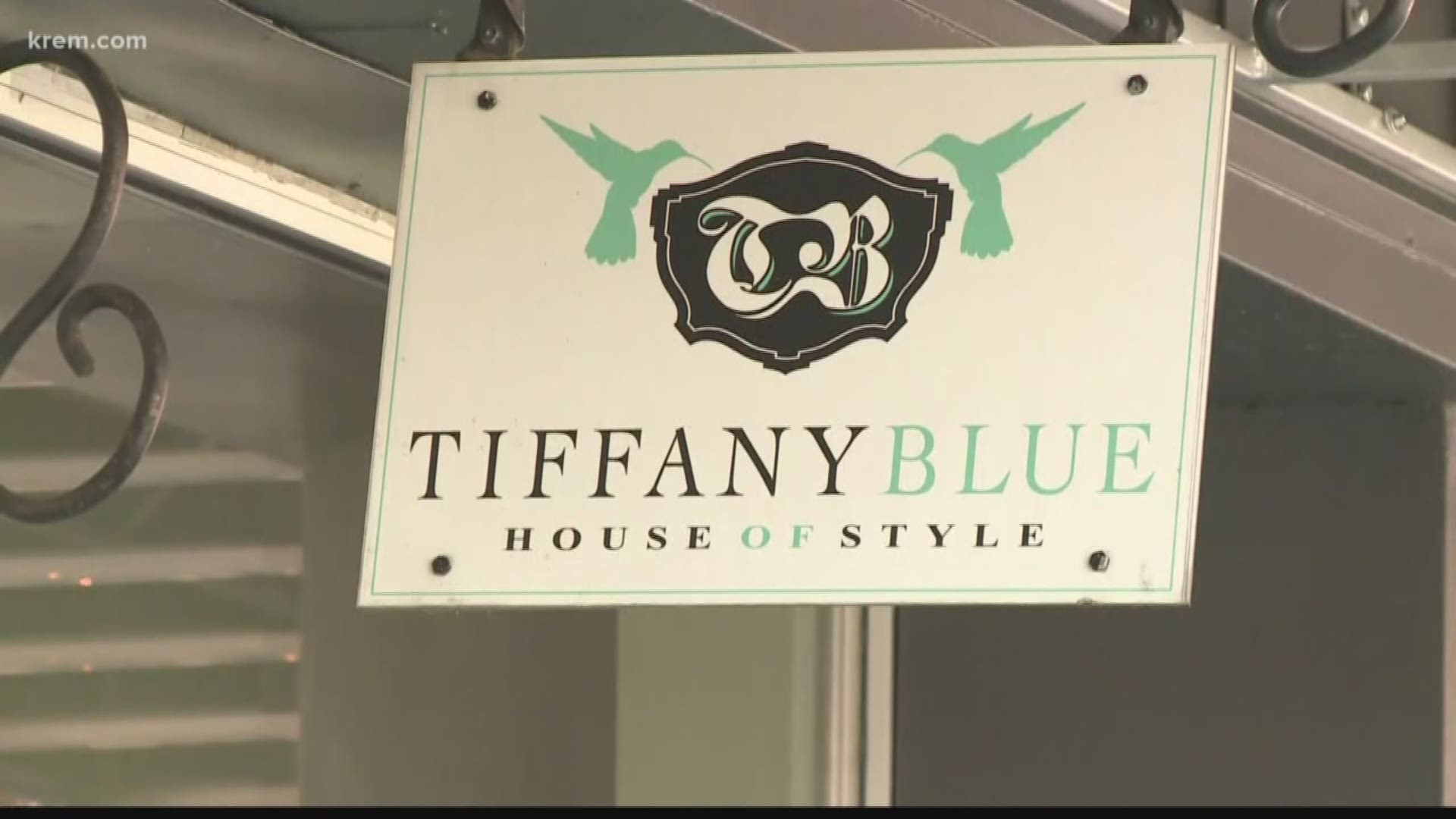SPOKANE, Wash. — Many people in Spokane County and the Inland Northwest are eager to get life back to normal, however, there are certain milestones the state has to hit before we can return to business as usual.
Let's look at the numbers as of May 9:
Spokane County:
- According to the Spokane Regional Health District there are 383 cases in Spokane County and 29 deaths.
- Nine people remain hospitalized. A total of 69 people have been hospitalized from coronavirus in Spokane County since the outbreak began.
- Around 66.7% of all coronavirus cases in Spokane County have recovered, according to SRHD.
There are only 10 counties in the state that are eligible to apply for an early reopening right now, according to Gov. Jay Inslee. Those include Lincoln, Ferry and Pend Orielle counties.

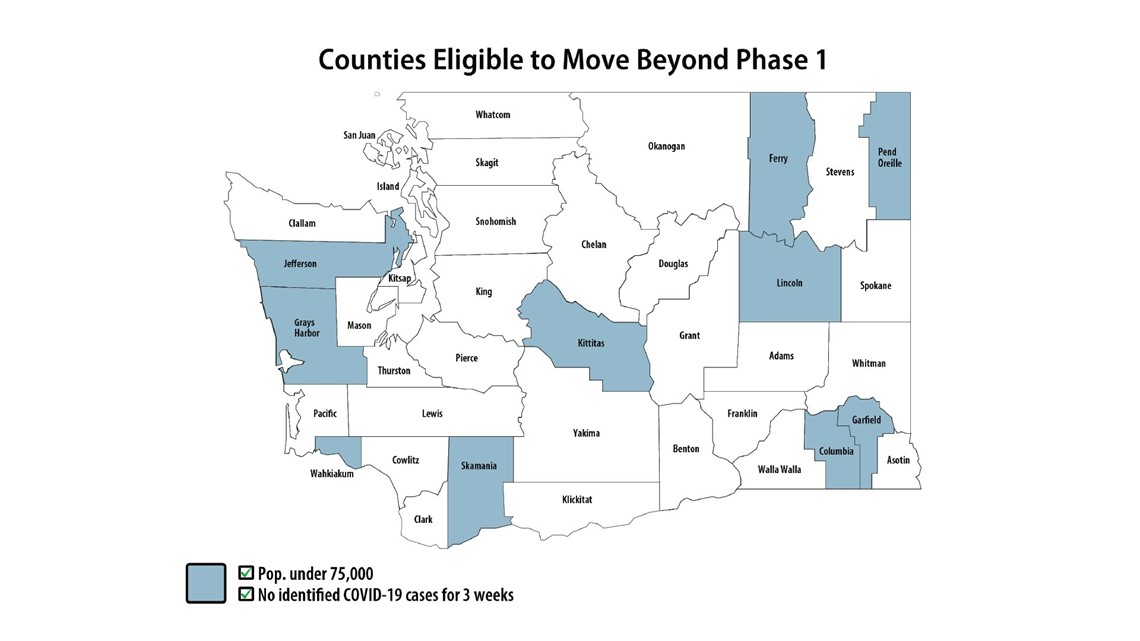
To be eligible, counties have to have less than 75 thousand people, with no new coronavirus cases for three weeks. Spokane County hasn't met the requirements to apply for early reopening. The counties that have are reporting very few cases.
- Lincoln County numbers: 2 confirmed cases
- Ferry County numbers: 1 confirmed case
- Pend Orielle County numbers: 2 confirmed cases
Spokane Mayor Nadine Woodward has been in contact with Governor Jay Inslee in an attempt to allow Spokane County to move on to phase 2 of the four phase opening plan earlier than the rest of the state.
Woodward argues that since the rate of new cases and hospitalizations in Spokane County have slowed, the county should be able to move on to phase two earlier than the rest of the state.
Rates of new cases and hospitalizations in Spokane county
However, the governor maintained that Spokane would need no new cases for three weeks for that to happen.
The Spokane Regional Health District has categorized cases of the coronavirus by zip code, which shows us which areas of Spokane have the highest rate of cases per 100,000 people.
Kelli Hawkins with the Spokane Regional Health District pointed out that a person who lives in one area or ZIP code still could have contracted the virus somewhere else.
Here are the five zip codes in Spokane with the most cases of the coronavirus as of Tuesday morning:
- Zipcode 99202 has 52 cases, with a case rate of 242.1 per 100,000 people.
- Zipcode 99208 has 47 cases, with a case rate of 83.3 per 100,000 people.
- Zipcode 99207 has 37 cases, with a case rate of 106.3 per 100,000 people.
- Zipcode 99206 has 25 cases with a case rate of 67.7 per 100,000 people.
- Zipcode 99037 has 24 cases, with a case rate of 146.7 per 100,000 people.
Hawkins also said the district doesn't have detailed demographics of the cases in each ZIP code. She also said that the district hasn't seen certain ZIP codes hit harder or lighter than other areas, but that areas with high numbers of people living close together are more at risk.
Here's a look at other counties around Eastern Washington:
- Adams county: 49 cases, 0 deaths
- Asotin county: 18 cases, 2 deaths
- Benton county: 550 cases, 47 deaths
- Columbia county: 1 case, 0 deaths
- Douglas county: 98 cases, 2 deaths
- Ferry county: 1 case, 0 deaths
- Franklin county: 401 cases, 14 deaths
- Garfield county: 0 cases, 0 deaths
- Grant county: 179 cases, 3 deaths
- Klickitat county: 19 cases, 3 deaths
- Kittitas county: 15 cases, 0 deaths
- Lincoln county: 2 cases, 0 deaths
- Okanogan county: 21 cases, 1 death
- Pend Orielle county: 2 cases, 0 deaths
- Stevens county: 9 cases, 1 death
- Whitman county: 14 cases, 0 deaths
Washington State:
- The state Department of Health is reporting 891 deaths among 16,231 overall cases in Washington.
- 230,680 people in Washington have taken a test for coronavirus and 0.07036153979538755% of those tests have been positive, according to the state Department of Health.
Washington began phase one of its reopening plan Tuesday, paving the way for businesses in the state to reopen, with restrictions.
In Phase 1, places like golf courses can begin operations again with a social distancing plan in place. For example, golf courses are only allowing two players per group unless you are all from the same household.
Outdoor activities like golfing and fishing can recommence, but people will have to take extra precautions.
Phase 1 also includes existing construction that meets the state's criteria, landscaping, auto dealerships, retail stores with curbside pickup only, car washes, and pet walkers.
Moving on to phase two depends on coronavirus cases continuing to decrease. If there's a spike in cases, restrictions could be put back in place.
In the past week, Washington state has made progress in fighting the coronavirus pandemic. Governor Inslee just released an updated dashboard showing where Washington improved. You can see that here compared to the graphs that were released last week:
Washington's progress against the coronavirus this week
Here's where Washington improved:
- Testing capacity: According to the Governor's Medium website, Washington has reached a record level of testing capacity since the virus started. "Daily testing capacity continues to improve, hitting 6,000 per day for the first time recently... Additionally, testing positivity rate has decreased to around 5%, reflecting an increase in testing availability."
- Case and contact investigations: The state said it has made progress in hiring and training new workers to manage case and contact tracing. The governor's Medium post says "as more people come on board, there is reason for optimism that this trend will continue."
- Risk to vulnerable populations: The improvement of this area reflects improvements in protections for long-term care facilities. The governor's Medium post says "these results give a slight improvement from last week, but there is still work to be done to understand and address impacts to other vulnerable communities."
Idaho
In Idaho, which is already in the beginning phases of its own reopening plan, here are the numbers:
- 2,178 cases
- 20 new cases confirmed Thursday
- 66 deaths
Here are the numbers for North Idaho in particular:
- Kootenai County: 62 cases
- Bonner County: 4 cases
- No deaths
Over time, Idaho has been able to flatten the curve of new cases. Based on this data, the number of new cases being reported has decreased since Idaho's peak of reported cases, which occurred between March 30 and April 4. Interestingly, the most people reported an onset of symptoms between March 15 and March 20.

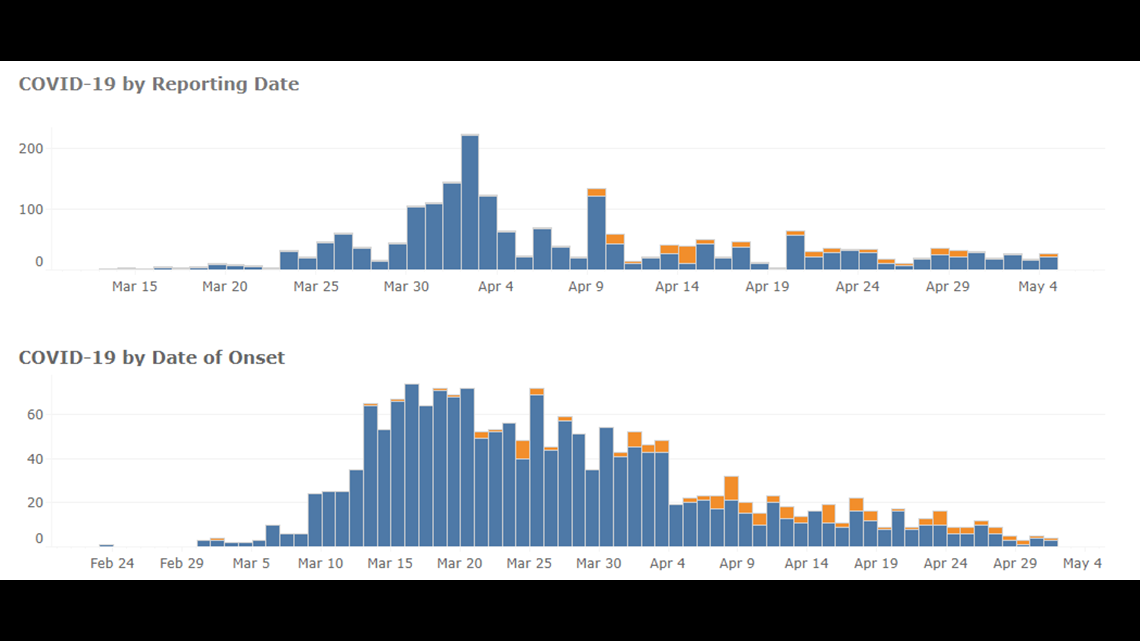
KING 5 and KTVB staff contributed to this article.





